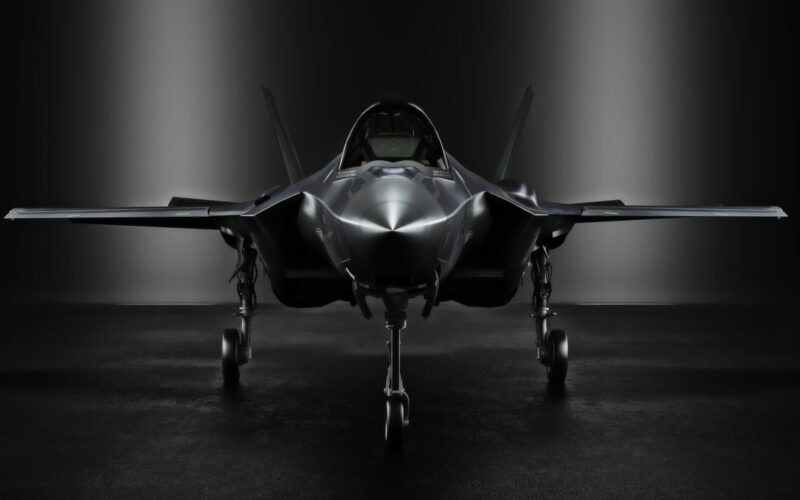This article was originally published on October 12, 2020.
The F-35 stealth fighter jet was supposed to be a groundbreaking aircraft that would replace a multitude of already existing fighter jets in their role and thus help rationalize supply chains and costs. However, the fifth-generation fighter jet cost has since exploded to become the most expensive weapon program in military history. The budget is now estimated to reach $1.5 trillion over the operational life of the aircraft.
Saving costs with a fifth-generation fighter jet
The initial requirements were for the F-35 to be an economical aircraft. In 2001, the Pentagon entrusted Lockheed Martin with the development of a fifth-generation fighter jet that could serve three of its corps: the U.S. Navy, the Air Force, and the Marines. The three versions (F-35A, F-35B, and F-35C) were required to have at least 80% of parts and avionics in common, in order to limit production and maintenance costs. The allocated budget for development was $233 billion.
19 years later, the titanic program regroups 14 countries and over 1,500 worldwide suppliers, such as Northrop Grumman, Pratt & Whitney, and BAE Systems. What was supposed to be a cost-saving procurement became the most expensive fighter jet ever designed.
The ever-growing list of F-35 problems
The F-35 development was plagued by accumulated delays and technical deficiencies. A software instability of the stealth jet radar was one of the first F-35 problems observed, but more dangerous technical issues arose throughout the years.
On October 5, 2020, the United States Air Force released a report in which it determined that some of those issues factored in the crash of an F-35A Lightning II near Eglin Air Force Base, Florida, in May 2020. The pilot was distracted by a discrepancy in the alignment of his Helmet Mounted Display. Additionally, the specific life support system of the F-35 caused excessive fatigue to the pilot who had participated in several days of exercise. “It is known amongst the F-35 flying community that the oxygen delivery system is very different than legacy oxygen delivery systems, such as the one used in the F-15E,” was stated in the USAF report.
In June 2020, the United States Air Force found out early wear of the tubes of the On Board Inerting Gas Generation System, or OBIGGS, a system that replaces the oxygen contained in fuel tanks with inert gas, thus rendering kerosene vapors non-flammable. Flight restrictions on its stealth fighters were issued, preventing them from flying closer than 24 miles (40 km) from thunderstorms, as the aircraft were at risk of fuel explosion.
On September 18, 2020, the Dutch Ministry of Defense confirmed that the same issue was found on the fifth-generation fighter jets of the Koninklijke Luchtmacht (KLu), the Royal Dutch Air Force. Consequently, the four F-35As based in Leeuwarden could not participate in a NATO demonstration of interoperability, called Operation Allied Sky, in August 2020.
In addition to the flight restriction, lightning rods or protective shelters were imposed on the Dutch F-35As parked within 10 miles (18 kilometers) of a thunderstorm.
In the past, the life support system caused several cases of hypoxia. Peaks of pressure in the jet cockpit were also observed, which could cause barotrauma to the pilots (the same type of pressure damage faced by divers).
The fighter jet cost slips
As a result of the multiple fixes and delays, the total fighter jet cost in development of the fighter jet exploded to more than $400 billion dollars. Additionally, the operating cost of the entire F-35 fleet over its expected 60-year lifetime is now forecasted to reach $1.12 trillion dollars, of which 70% would be spent on flying the aircraft.
An hour flying the F-35 costs $36,000 on average, with slight differences depending on the specific variant. In contrast, an hour flying an older-generation Lockheed Martin F-16C Viper fighter jet costs $22,000. While an effort was made to try to reduce the F-35A operating cost to $25,000 by 2025, the Pentagon has judged the ambition to be “highly unlikely”.
During his election campaign, Donald Trump targeted the fighter jet cost along with the new Air Force One developed by Boeing. “The F-35 program and cost is [sic] out of control. Billions of dollars can and will be saved on military (and other) purchases after January 20th,” the then-recently elected President wrote on Twitter on December 12, 2016.
In June 2019, the US Department of Defense and the aircraft manufacturer Lockheed Martin congratulated themselves after reducing the cost per unit to $80 million for 157 F-35A fighter jets intended for the USAF. The 8.8% drop compared to 2018 was reached a year ahead of schedule.
Nonetheless, the price remains a legitimate concern for several potential operators. In September 2020, the citizens of Switzerland approved by referendum the procurement of a new fighter jet for their air force. Following the vote, local political representatives announced they would campaign against the choice of Lockheed Martin F-35, describing the jet as “the most expensive” choice.
F-35 in service & combat
As of October 2020, Lockheed Martin has delivered over 500 F-35 fighter jets to customers in both the U.S. and abroad. Israel was the first operator to use the F-35 in combat. In May 2018, the Middle-Eastern country announced it had used the jet to carry out strikes in Syria against Iranian positions and in neighboring Lebanon against Hezbollah insurgents.
In March 2020, the F-35 was used for the first time in a NATO quick alert reaction mission. At that time, Norway sent its stealth fighters to intercept a Russian maritime patrol aircraft.
In addition to being the most expensive fighter jet ever made, the aircraft is still riddled with major flaws, and the extent of its tactical capabilities in combat remains hypothetical.

